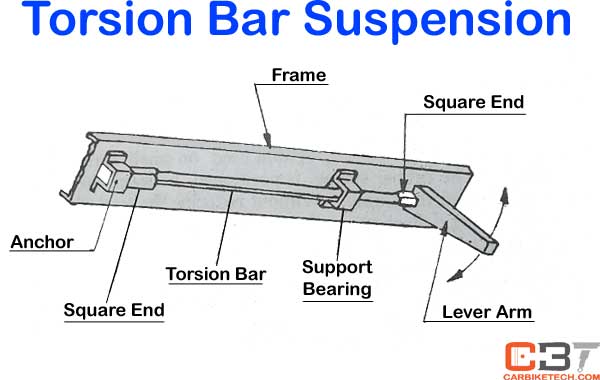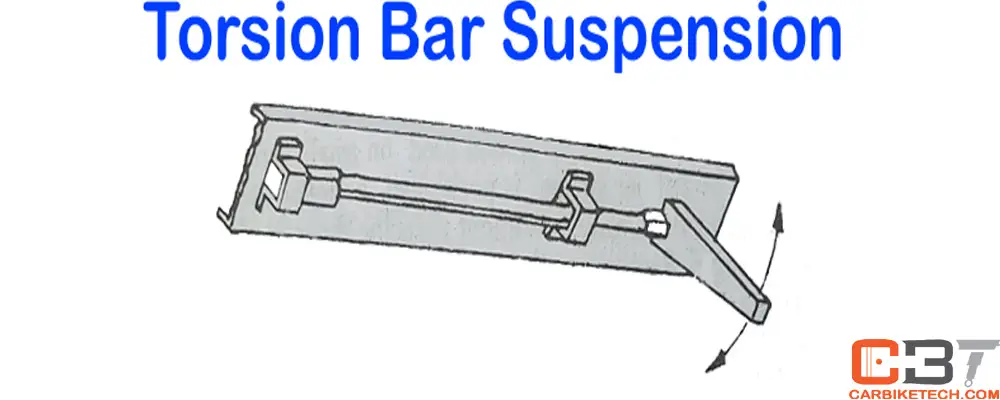What Is Torsion Bar Suspension?
Design:
The torsion bar suspension consists of a straight rod made of spring steel. Manufacturers rigidly fasten it to the vehicle frame or body. The other end attaches to an upper or lower control arm. As the control arm swings up and down in response to wheel movement, the torsion bar twists to prove spring action.
This type of suspension system uses a steel rod or torsion bar. It acts as a spring to hold the upper & lower control arms parallel under load. The front end of the rod is hexagonal. It fits tightly into an opening in the lower control arm. Besides, its rear projection is also hexagonal. It fits tightly into a slot in an anchor attached to the frame cross member. A seal hides the hexagonal shape of the torsion bar.

Manufacturers make the torsion bar of a straight solid bar or tube. Or they form the metal leaves into a circular or square metal piece. Then they connect one end to the wheel using a lever or wishbone-shaped member. It allows the end connected to the wheel assembly to twist by deflecting the road wheels. Thus, you can get the spring effect by the torsion bar.
This arrangement positions both transversely and parallel to the frame. It is pretty neat and compact. Besides, the system reduces its spring weight due to its lightness. However, it cannot resist driving & braking torques. The torsion bar also comes in the coil spring form. Therefore, the length & diameter affects the rate of both. The rate decreases, making the spring softer if the length increases or the diameter decreases.
Function:
The torsion bar twists due to the forces on the wheel assembly outer end of the lower control arm. Manufactures design the torsion bar to balance these forces to keep the lower arm at a designated height. You can adjust the height by a tightening mechanism at the anchor end, which twists the rod using an adjusting bolt and swivel. Besides, manufacturers use a strut rod to keep the suspension in alignment. This suspension can cushion road shocks by causing the lower arm to twist the torsion bar. When the wheels are no longer under stress, the arm returns to its normal position.
Manufacturers use the torsion bar suspension mainly in SUVs & cars. The long torsion bar twists when the lever arm moves up or down. It secures the fixed end to the frame by an anchor mound while a support bearing supports the free end. Manufacturers use it either in the front or rear suspension systems. Due to wheel deflection, the rubber bonded between the shaft and the bar twists in torsion.
Rear Suspension:
In rear suspension, torsion rods may be either longitudinal or transverse. The two trailing arms serve as control arms. Besides, two full-width torsion bars provide spring action. One end of each torsion bar clamps to a stubby subframe that attaches to the vehicle underbody. The trailing arm connects to the other end. Thus, it causes the torsion bar to twist as the wheel and trailing arm move up and down.
Toyota, Nissan, and Tata Motors use torsion bar suspension designs in their 4×4 cars.
